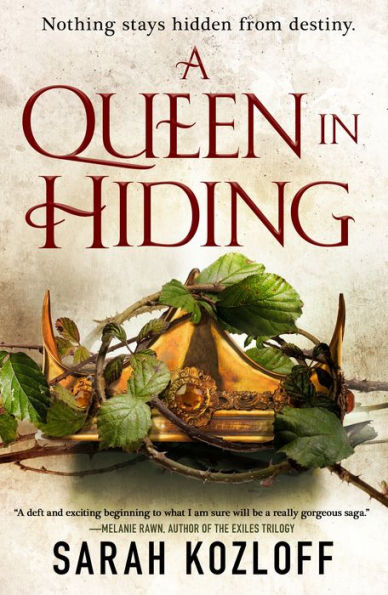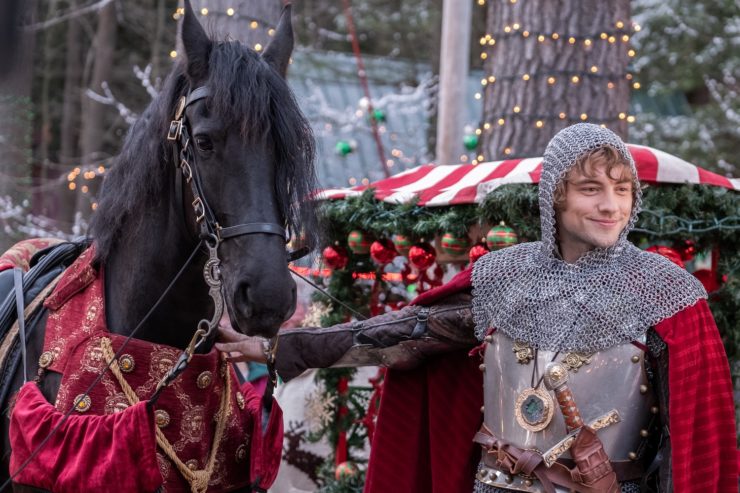Horseman’s wisdom says, There’s a horse for every human and a human for every horse.
Horses, like humans, are individuals. They have likes and dislikes, quirks and foibles, and particular ways of dealing with the world. When they interact with humans, they may get along splendidly. Or they may clash on every possible level. Or anywhere in between.
I like to say, “My horse is perfect—for me!” He may be your worst nightmare, but he’s my dreampony.
When we’re writing or dreaming about fantasy horses, there’s considerable fun and profit in pondering our equine-human matches. The parameters are remarkably similar to romantic pairings, and can pack the same amount of emotional intensity. Horsepeople truly and dearly do love their horses; as many a horseperson’s spouse has been known to observe, “I know I’m a solid number two. But at least number one isn’t human!”
One of my favorite things about the schlockily enjoyable holiday time-travel movie The Knight Before Christmas is the way the knight loves his horse. He looks for the horse when he’s snatched out of his own time, worries about him, talks about him, and when they’re finally reunited, his joy and relief are palpable. My personal conviction is that the film is indeed a love story—but it’s between the knight and the horse. The human woman is nice and helpful and she is dear to him, but his true love is the beautiful black stallion.
So what’s a perfect equine match? What’s your dreampony?
Everybody has a slightly different (or very different) answer. The Standard Fantasy Stallion(tm) has a lot of fans. Think Shadowfax. Think Goliath in Ladyhawke. He’s gorgeous, of course. Big, usually. Rare in breed or type—King of the Mearas (played in the films by a snow-white Andalusian), coal-black medieval destrier (played by a Friesian at a time when the breed was relatively little known—that changed fast among fans of the film).
But what’s he like when he’s at home? What kind of person is he? Is he fiery? Calm? Sweet and obliging, or opinionated and sometimes or often difficult? Is he smooth and easy to ride, obeying your every wish, or does he expect you to work a little or a lot in return for his services?
Or hers. Let us never forget the Mare side of the equation. Mares are in disfavor in these days in which the riding gelding reigns supreme (and stallions, though popular in fantasy, are a whole lot less so in reality), but they have diehard and devoted fans. Ask a stallion, they say. Tell a gelding. But negotiate with a mare. Her respect is not easily won, but once you have it, she’ll give you her whole heart.
Buy the Book


A Queen in Hiding
Why yes, I’m a mare person. I love the boys, appreciate the non-hormonal and relatively easygoing nature of the gelding, and love the fire and the challenge and, once won, the strong loyalty of the stallion, but there’s nothing better, for me, than a good mare. She can, especially in season, have just about as much fire and fierceness as a stallion, but she tends to be smarter about it. She rules and she knows it. He may dominate the humans’ attention with his noisy dramatics, but if she gives him That Look, the Look of the mare who Has Had Enough, if he knows what’s good for him he’ll get over himself.
The connection between the horse and the human works on all levels. We may get fixated on what a horse can do for us as a riding or driving animal, but horsepeople value just being around horses. There are horses who might not click under saddle or in harness (or who for various reasons can’t do those things—just as there are humans in the same situation), but they turn out to be wonderful companions, protectors, and friends. They’ll come over when you visit, hang out with you even after the treats are gone, and simply enjoy your company.
When the connection extends to riding, everybody has their particular set of preferences. Fantasy may lean toward Shadowfax or a McCaffrey dragon, but practical reality looks at the personality, experience, physical capacity, and general, all-around set of likes and dislikes of both parties. Less experienced riders will need (though that lack of experience may not lead them to want) a calmer, quieter, more cooperative horse. And that horse will have a considerable degree of patience and willingness to teach, as well as to soldier on through as the rider learns balance and coordination.
The expert rider won’t always be an unqualified success with every horse, either. If the two don’t click—if their personalities and personal styles don’t mesh—the rider may get through the ride well enough (and will make it a point of pride to do so), but this won’t be her favorite hour of the day. She’ll be glad to move on to the horse who does fit, whose responses are just right, who gives her that little extra bit of joy.
Sometimes these matches are a matter of time and patience on both sides. They may not mesh on the first ride, but as they work together, they find their common language of movement and reaction and interaction. They’ll become partners, and put mutual effort into making it work.
And sometimes it’s love at first sight. Horse and rider meet, the rider mounts, it’s done. Audible click. There will be details to work out, edges to smooth, vocabulary to learn on both sides, but they both know. This is The One.
I said it was a romance, didn’t I?
If you’ve had a well-matched dance partner, it’s like that. You move to the same rhythms. You respond to the music in similar ways.
My dreamponies are on the small side, as I am, and on the chonky side, because, well, so am I. They’re dangerously smart and distinctly opinionated—they don’t instantly do what I tell them just because I told them to. I have to ask them politely and respectfully, and I have to listen if they tell me no, they can’t or won’t do that. They tend to be big boingy movers, which can be hard to sit, but I got addicted to the Big Boingities in my early years as a dressage rider, and I never really got over it. I like to feel as if I’m flying.
They’re very, very sensitive, too. Need very, very light aids (as we call the communications of seat, leg, and rein that ask a horse to stop and go and turn). Partly because I’m a little bit lazy, and partly because, like the boingities, I just love the way it feels.
I do not like very reactive or spooky horses, and I truly dislike a horse with a lot of buck in him. No, Thank You. But there are many riders who love the challenge of these horses. It’s exciting; it’s adventurous. It’s an achievement to ride out the explosion, and then to persuade the horse to be calm.
The opposite end of the spectrum isn’t my favorite, either. The very calm, very phlegmatic horse who never blows up has his strong points for me and definitely for inexperienced or timid riders, but when that goes along with a tendency not to go any faster or more energetically than he absolutely has to, and a set of controls that needs some serious application to get a response, I get frustrated. And yet for many riders, this is their bliss.
Every human and every horse, as I said, is different. What would your perfect match be? When you dream about the perfect ride, what brings you joy?
Judith Tarr is a lifelong horse person. She supports her habit by writing works of fantasy and science fiction as well as historical novels, many of which have been published as ebooks by Book View Cafe and Canelo Press. She’s even written a primer for writers who want to write about horses: Writing Horses: The Fine Art of Getting It Right. Her most recent novel, Dragons in the Earth, features a herd of magical horses, and her space opera, Forgotten Suns, features both terrestrial horses and an alien horselike species (and space whales!). She lives near Tucson, Arizona with a herd of Lipizzans, a clowder of cats, and a blue-eyed dog.










